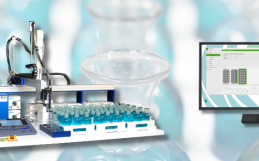A common benefit of peCOD implementation for this application is optimization of coagulant dosing.
The traditional method up to this point has been consistent dosing based on laboratory testing results (jar testing is a very common method of developing coagulant dosing requirements). They then increase their dosing for events that they know to cause NOM spikes. The problem is they often don’t know the extent of the NOM spikes, so they increase their dosing to what has been deemed as ‘enough’. More often than not this is over-dosing, not really causing downstream issues but incurring more cost than is needed for these events. However, when the extra dose is not enough and they under-dose, NOM gets through and reacts with the disinfection chemicals creating DBPs.
The missing ingredient is knowing when these NOM spikes occur, and to what extent. The events could be anything from seasonal variation based on climate to rapid spikes from storm events, but the benefit of knowing is the same. Plants that have enough funding to do so monitor UV and TOC online, however research has shown that this is not enough. peCOD is another piece of the NOM puzzle and is truly the more important measure when looking at how NOM will react and be affected by treatment. If you know the COD of the NOM coming in and can match it to known dosing requirements, you minimize the possibility of DBPs forming.
The speed and ease of use of the peCOD is also key here, you are placing this knowledge directly in the operators’ hands, rather than having it be a result they wait to get back from an external lab. When they can truly understand the technology and it’s value, it has a secondary effect of getting them more involved with optimizing the treatment processes. We see with numerous cases (mostly in WWTPs at this point) this occurring, where they get the peCOD for measuring one or two points then realizing the benefit it can have through monitoring their whole plant.



